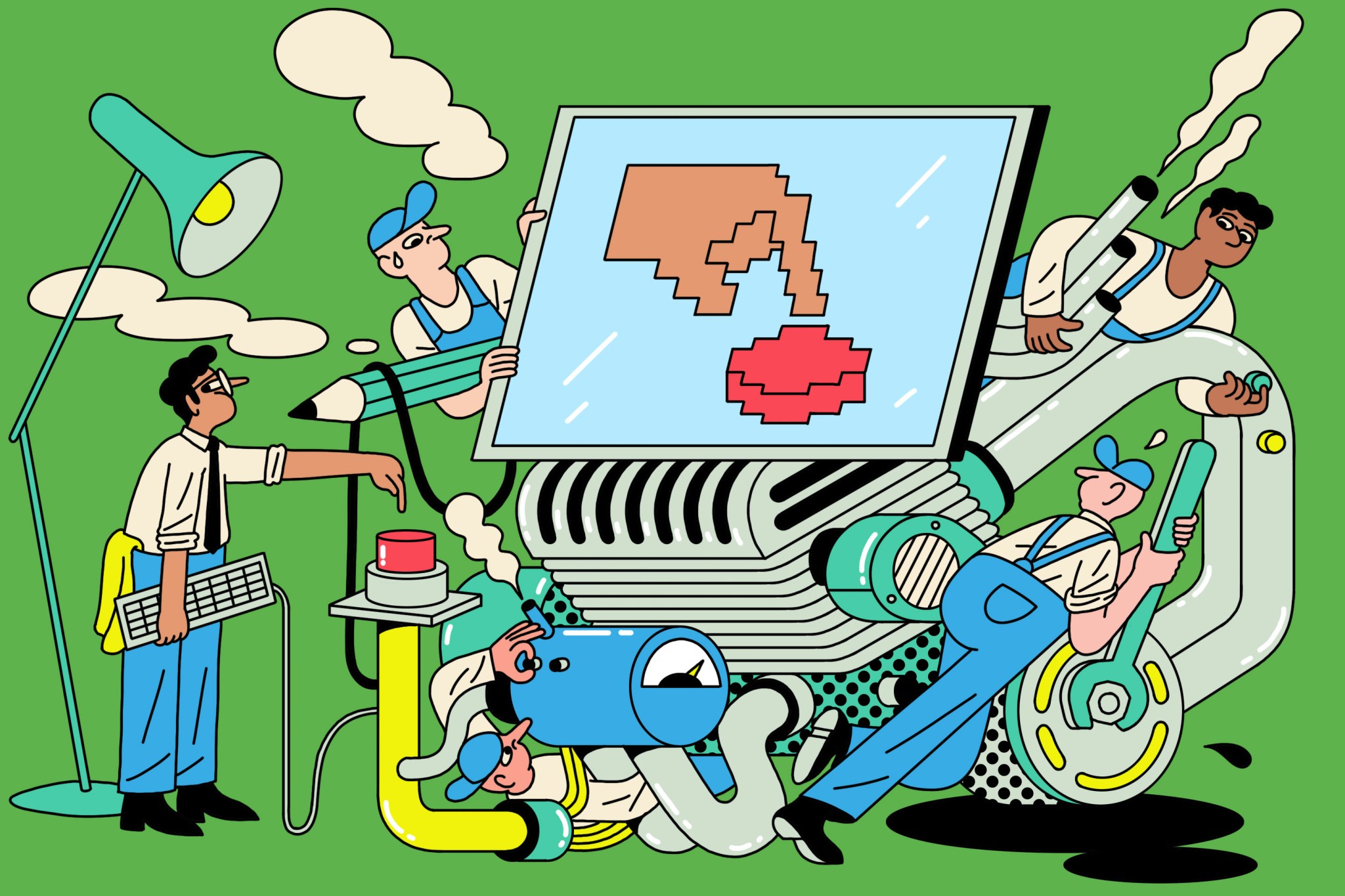
“AI fatigue” is setting in as companies increasingly fail to prove the concept. Here’s how to prevent it

AI experiments within companies have been moving quickly, but they don’t always go smoothly. The share of companies that canceled the majority of their AI initiatives jumped from 17% in 2024 to 42% so far this year, according to Analysis from S&P Global Market Intelligence Based on a survey of over 1,000 participants. Overall, the average company abandoned 46% of AI proofs of concept rather than deploying them, according to the data.
Against the backdrop of more than two years of rapid development in AI and the pressures that come with it, some business leaders facing repeated AI failures are beginning to feel overwhelmed. Employees feel it too: according to a study from Quantitative workplaceemployees who consider themselves frequent users of AI report higher levels of burnout (45%) compared to those who use AI infrequently (38%) or never (35%) at work.
Failure is of course a normal part of R&D and any technology adoption, but many leaders describe an increased sense of pressure surrounding AI compared to other technology transformations. At the same time, important conversations about AI are unfolding far beyond the workplace, with AI taking center stage everywhere from schools to geopolitics.
“Any time the market bombards you, and everyone around you, with a message about a hot technology, that’s human nature — you get tired of hearing about it,” said Eric Brown, director of artificial intelligence and emerging technology at West Monroe Consulting.
Failure and stress drive ‘AI burnout’
In his work supporting clients as they explore the application of AI, Brown has noticed a significant trend of clients feeling “AI fatigue” and becoming increasingly frustrated with AI proof-of-concept projects that fail to produce tangible results. He attributes many failures to companies exploring the wrong use cases or misunderstanding the different subsets of AI that are relevant to a job — for example, jumping on large language models (LLMs) to solve a problem because it has become popular, when machine learning or another approach would actually be more appropriate. The field itself is also evolving so rapidly and is so complex that it creates an environment ripe for burnout.
In other cases, pressure and even excitement about the possibilities may cause companies to make very large swings without fully considering them. Brown describes how one of his clients, a massive global organization, gathered dozens of its top data scientists into a new “innovation group” tasked with figuring out how to use AI to drive innovation in their products. He said they had built a lot of great AI-driven technology, but struggled to adopt it because it didn’t solve core business problems, causing a lot of frustration due to wasted effort, time and resources.
“I think it’s very easy with any new technology, especially one that gets attention from AI, for us to be the technology first,” Brown said. “That’s where I think a lot of that fatigue and initial failures come from.”
Eoin Hinchy, co-founder and CEO of workflow automation company Tines, said his team experienced 70 failures in an AI initiative they had been working on over the course of a year before they finally came up with a successful iteration. The main technical challenge was around making sure that the environment they were building for the company’s clients to deploy LLM degree holders would be secure and private enough, so they definitely had to get it right.
“There were definitely moments where we felt like we were done with it, and yeah, this is it. This is the edge we need. This is going to be a big change — just to realize, actually, no, we need to go back to the drawing board.”
Aside from the team that was already working on the technical solutions, Hinchey said other parts of the organization were also overwhelmed by the ups and downs. The go-to-market team in particular was trying to do its job in a competitive sales environment where other vendors were launching similar offers, but the pace of getting to the final product was out of their hands. Hinchey said aligning the product and sales teams was the biggest challenge organizationally.
“There had to be a lot of pep talks, dialogue and reassurance with the engineers, product team and our sales people, saying that all the blood, sweat and tears upfront in this not-so-glamorous work would be worth it in the end,” he said.
Let functional teams take charge
At cybersecurity firm Netskope, Chief Information Security Officer James Robinson has felt his fair share of disappointment, describing frustration with customers who failed to deliver on various technical tasks and other investments that didn’t deliver after getting his hopes up. But while he and his engineers remain motivated in large part by their own internal desires to build and experiment, the company’s management team is already feeling tired. Their to-do lists often feel like work that’s already been done as they have to race to keep up with approval of new efforts, the latest AI tool the team wants to adopt, and everything in between.
In this case, the solution was all in the process. The company is removing some of the burden by requiring specific business units to handle the initial governance steps and setting clear expectations for what needs to be done before communicating with the AI Governance Committee.
“One of the things we’re really pushing and exploring is ways we can put this into business units,” Robinson said. “For example, with marketing teams or engineering productivity teams, let them do the first round of review. They’re more interested and more motivated by it, frankly, so let them do that review. And then once it gets to the governance team, they can just ask some specific in-depth questions and we can make sure the documentation is done.”
This approach reflects what West Monroe’s Brown said ultimately helped his client recover from failed “Innovation Lab” efforts. His team suggested going back to the business units to identify some key challenges and then see which ones might be best suited to an AI solution. They then split into smaller teams that included input from the relevant business unit throughout the process, and were able to pilot and build a prototype that demonstrated that AI could help solve one of these problems within a month. After another month and a half, the first version of this solution was published.
Overall, his advice for preventing and overcoming AI fatigue is to start small.
“There are two things you can do that are counterproductive: one is just give in to fear and do nothing at all, and then your competitors will eventually outpace you,” he added. “Or you can try to do too much at once or not focus enough on how you can try to integrate AI into different parts of your business, and that will be exhausting as well.” “So take a step back, think about the types of scenarios you could try with AI, break down smaller teams into those functional areas, and work in small chunks with some guidance.”
The goal of AI, after all, is to help you work smarter, not harder.












Post Comment